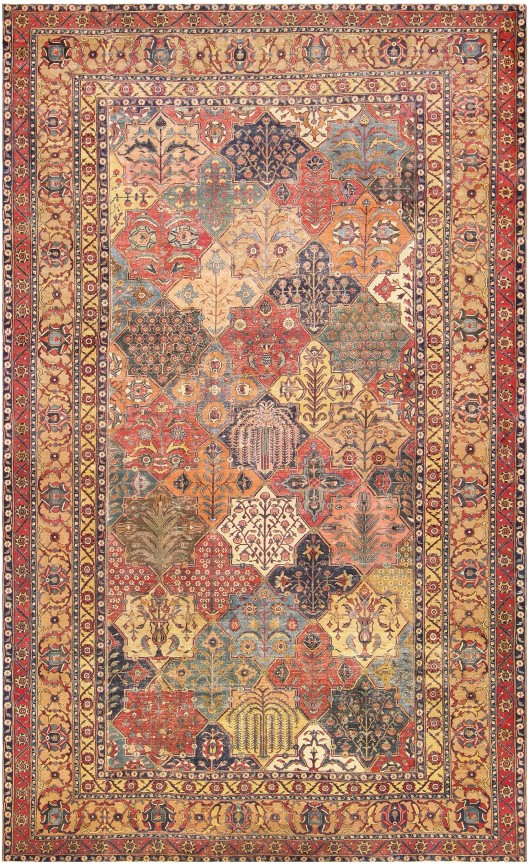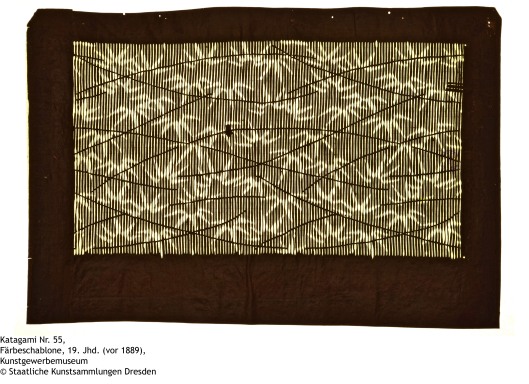Textiles, anything else that is beautiful and inspiring . . . . a few travels, some shoppings . . .
Monday, December 29, 2014
Friday, December 26, 2014
Sunday, December 14, 2014
Conservation in the Hermitage. Through the Prism of Time - Video
The video is accompanying the exhibition ‘Conservation in the Hermitage. Through the Prism of Time’ (29.10.2014 - 22.02.2015) and introduces the viewers to the work of the restorers of the Laboratory for Scientific Restoration of Textiles
https://www.facebook.com/video.php?v=891914510842280&set=vb.250763358290735&type=2&theater
https://www.facebook.com/video.php?v=891914510842280&set=vb.250763358290735&type=2&theater
Friday, December 12, 2014
Iroquois Whimsies
Once discarded as collectible, Iroquois Whimsies are tourist trade items created in the late 18th century by the Mohawks near Montreal and the Tuscarora of Niagara Falls. Items include pincushions, purses, picture frames, needle cases and other ornate wall hangings exhibiting the raised beading technique.
Silks for Sultans Outstanding Examples - Photos
Click on the photo to see next image.
https://www.facebook.com/photo.php?fbid=10152941727503377&set=a.10152941725743377.1073741970.727298376&type=1&theater
https://www.facebook.com/photo.php?fbid=10152941727503377&set=a.10152941725743377.1073741970.727298376&type=1&theater
Thursday, December 11, 2014
ARMENIAN COCHINEAL - Photo
ARMENIAN CARPET - The red dye used in this carpet is unique to the Armenian Highlands. The dye is made from Armenian cochineal, an insect native to the Ararat plain and Aras (Araks) River valley in the Armenian Highlands.
https://www.facebook.com/Art.of.Armenia/photos/pcb.737061469720781/737051043055157/?type=1&theater
https://www.facebook.com/Art.of.Armenia/photos/pcb.737061469720781/737051043055157/?type=1&theater
Cochineal
http://en.wikipedia.org/wiki/CochinealWednesday, December 10, 2014
“Star of the Magi” (8-pointed star)
This page is filled with discussions and examples of the “Star of the Magi” (8-pointed star) important to Iranian art, architecture and philosophy since antiquity as readily seen in Persian carpets in the form of a center medallion… even the lotus may be viewed in that regards… but why 8?
https://www.facebook.com/145291692218257/photos/a.161034363977323.42510.145291692218257/690604601020294/?type=1&theater
https://www.facebook.com/145291692218257/photos/a.161034363977323.42510.145291692218257/690604601020294/?type=1&theater
5 Interpretations for The Meaning of the Tree of Life
The essence and meaning of the Tree of Life in many modern interpretations is believed to connect all forms of creation. The image is widely thought to represent the Divine Creator, and it is revered as the representation of the interconnectedness of all sentient beings. Today’s interpretation is an excellent summation of the various mythical and religious interpretations the Tree of Life throughout history.
http://www.wakingtimes.com/2014/12/09/5-ancient-interpretations-meaning-tree-life/
http://www.wakingtimes.com/2014/12/09/5-ancient-interpretations-meaning-tree-life/
Tuesday, December 9, 2014
PAZYRYK CARPET - Photos
PAZYRYK CARPET - Of Armenian origin, the Pazyryk carpet, the oldest, single, surviving knotted carpet in existence, excavated from a frozen tomb in Siberia, dated from the 5th to the 3rd century BC.
https://www.facebook.com/Art.of.Armenia/photos/a.757295911030670.1073741859.355288647898067/757295954363999/?type=1&theater
https://www.facebook.com/Art.of.Armenia/photos/a.757295911030670.1073741859.355288647898067/757295954363999/?type=1&theater
Monday, December 8, 2014
Talismanic Shirt - Photos
This 16th-century Ottoman talismanic shirt (above) is covered in a variety of astonishingly intricate scripts, including Muhaqqaq, Naskh, Ghubar, Thuluth and square Kufic. Paper-thin, it would have conveyed a spiritual protection to the wearer far more powerful than any chainmail. This shirt, with its decoration, parallels a group of similar Ottoman shirts in the Topkapi Saray Museum, all dating from the 15th and 16th centuries, with the crescent moon and cypress trees so common in 16th-century Ottoman styles.
https://www.facebook.com/photo.php?fbid=4221901446384&set=o.280538935359556&type=1&theater
Ottoman Talismanic shirt (jama) with extracts from the Qur’an and prayers. Turkey, 16th/17th century.
This is an unusual and finely executed Qur’an jama. The basic layout related to other jamas of the fifteenth and sixteenth centuries, with a large number of panels and roundels containing Qur’anic quotations, pious phrases, prayers and talismanic numbers, but here their arrangement is unusually varied and inventive, with a number of distinctly Ottoman features such as the architectural references on the reverse of the jama with a large door flanked by Kufic cartouches on two sides and tilework above. What is also particularly noteworthy is the accomplished quality of the calligraphy, which is executed in a number of different scripts, and retains a confident aesthetic in even its most minute form. The amalgamation of all the decorative and calligraphic styles is a technique visible on other comparable talismanic shirts including the jama of Cem Sultan (TKS13/1404, see Roxburgh 2005, pp.300-1, no.257) and that of Mehmed II (TKS13/1408, published in Palace of Gold and Light, Treasures from the Topkapi, exhib. cat, Istanbul, 2000
https://www.facebook.com/506010889476343/photos/a.506015819475850.1073741828.506010889476343/565691660174932/?type=1&theater
https://www.facebook.com/photo.php?fbid=4221901446384&set=o.280538935359556&type=1&theater
Ottoman Talismanic shirt (jama) with extracts from the Qur’an and prayers. Turkey, 16th/17th century.
This is an unusual and finely executed Qur’an jama. The basic layout related to other jamas of the fifteenth and sixteenth centuries, with a large number of panels and roundels containing Qur’anic quotations, pious phrases, prayers and talismanic numbers, but here their arrangement is unusually varied and inventive, with a number of distinctly Ottoman features such as the architectural references on the reverse of the jama with a large door flanked by Kufic cartouches on two sides and tilework above. What is also particularly noteworthy is the accomplished quality of the calligraphy, which is executed in a number of different scripts, and retains a confident aesthetic in even its most minute form. The amalgamation of all the decorative and calligraphic styles is a technique visible on other comparable talismanic shirts including the jama of Cem Sultan (TKS13/1404, see Roxburgh 2005, pp.300-1, no.257) and that of Mehmed II (TKS13/1408, published in Palace of Gold and Light, Treasures from the Topkapi, exhib. cat, Istanbul, 2000
https://www.facebook.com/506010889476343/photos/a.506015819475850.1073741828.506010889476343/565691660174932/?type=1&theater
Opulent Clothing Unearthed in Ming Dynasty Tomb
Opulent Clothing Unearthed in Ming Dynasty Tomb
http://www.livescience.com/49041-clothing-unearthed-ming-dynasty-tomb.htmlOrnate Clothing from the Ming Dynasty Unearthed in China (Photos)
http://www.livescience.com/49044-clothing-unearthed-china-tomb-ming-dynasty.htmlMy First Purchase – Fulani Wedding Blanket
My First Purchase – Fulani Wedding Blanket
http://manolosonamission.wordpress.com/2008/08/11/my-first-purchase-fulani-wedding-blanket/Sunday, December 7, 2014
From Silk to Synthetic Phulkari: The Long Journey of a Period Textile - Photo
If you love the exquisite counted-thread embroidery of the Hazara Phulkari from Pakistan, this research paper (From Silk to Synthetic Phulkari: The Long Journey of a Period Textile) by Dr. Shabnam Bahar Malik, Bahria University, Islamabad, Pakistan, is an interesting read.
http://www.ijhssnet.com/
https://www.facebook.com/adventuresstextiles/photos/a.514353205323648.1073741825.358203087605328/605879209504380/?type=1&theater
http://www.ijhssnet.com/
https://www.facebook.com/adventuresstextiles/photos/a.514353205323648.1073741825.358203087605328/605879209504380/?type=1&theater
"Tulipes Hollandaises" (textile) - Photo
"Tulipes Hollandaises" (textile)
Design House: House of Worth
(French, 1858–1956)
https://www.facebook.com/EgyptianTextileMuseum/photos/a.282070578539725.67611.280538935359556/811363455610432/?type=1&theater
Design House: House of Worth
(French, 1858–1956)
https://www.facebook.com/EgyptianTextileMuseum/photos/a.282070578539725.67611.280538935359556/811363455610432/?type=1&theater
Nanbu Sakiori - Sumiko Inoue, the Aomori Craft Master - Video
‘Sakiori’ is a woven fabric that is produced from worn out cloth and garments torn thinly and then woven tightly into clothing and other products for daily use. Sakiori is woven with warps of cotton and wefts of thin worn out cloth. These fabrics are durable and warm, turning softer in texture with use.During the Edo Era, cultivation and availability of cotton was hard due to the cold climate in the Nanbu region in eastern Aomori. Therefore, cherished cloth was re-used as materials for weaving Kotatsu-gake or warm blankets, warm working clothes, Obi for Kimono, and so forth. Such work constituted manual labour for women during slack seasons on the farm.
https://www.facebook.com/video.php?v=762559140505209&set=vb.135294296565033&type=2&theater
https://www.facebook.com/video.php?v=762559140505209&set=vb.135294296565033&type=2&theater
SHONAI SASHIKO BY YUICHI ONODERA - Video
SHONAI SASHIKO BY YUICHI ONODERA
The vertical, horizontal, and diagonal stitches in Shonai Sashiko create geometrical patterns, making for a beautiful and strong fabric.
There are about 40 different basic patterns including Kome-sashi (rice pattern ), Uroko-sashi(scale pattern), Hishi-sashi(rhomb pattern) and Soroban-sashi (abacus pattern), which can indicate many things such as women's wish for good harvest, large catch, business prosperity and affection toward their family members. The traditional methods are upheld, sewing stitch by stitch on a blue cloth with unbleached white threads. These works have recently received high praise for their heartwarming beauty.
Source: http://
https://www.facebook.com/video.php?v=763527417075048&set=vb.135294296565033&type=2&theaterThe vertical, horizontal, and diagonal stitches in Shonai Sashiko create geometrical patterns, making for a beautiful and strong fabric.
There are about 40 different basic patterns including Kome-sashi (rice pattern ), Uroko-sashi(scale pattern), Hishi-sashi(rhomb pattern) and Soroban-sashi (abacus pattern), which can indicate many things such as women's wish for good harvest, large catch, business prosperity and affection toward their family members. The traditional methods are upheld, sewing stitch by stitch on a blue cloth with unbleached white threads. These works have recently received high praise for their heartwarming beauty.
Source: http://
Friday, December 5, 2014
ANTIQUE COVERLETS OFFER COLD COMFORT
ANTIQUE COVERLETS OFFER COLD COMFORT; 175-YEAR OLD HANDWOVEN WOOLS REMAIN ABSOLUTELY USEFUL
http://www.artfixdaily.com/artwire/release/6738-antique-coverlets-offer-cold-comfort-175-year-old-handwoven-woolsWednesday, December 3, 2014
Loin Cloths – Art in Frugality
Loin Cloths – Art in Frugality
Recreating clothes from the Iron Age
Recreating clothes from the Iron Age
http://m.phys.org/news/2014-11-recreating-iron-age.htmlThe Tournai Tapestry
Sotheby’s NY Masterworks
http://www.hali.com/auctions/sothebys-ny-masterworks-11-december-2014/Fragment of a velvet, silk and metal lamella, woven flat Iran; beginning of 17th century - Photo
Fragment of a velvet, silk and metal lamella, woven flat
Iran; beginning of 17th century
https://www.facebook.com/photo.php?fbid=779390998793234&set=a.449237608475243.100138.100001670242651&type=1&theater
Iran; beginning of 17th century
https://www.facebook.com/photo.php?fbid=779390998793234&set=a.449237608475243.100138.100001670242651&type=1&theater
Paracas style - Ceremonial mantle - Photo
Paracas style - Ceremonial mantle
http://commons.wikimedia.org/wiki/File:Paracas_style_-_Ceremonial_mantle_-_Google_Art_Project.jpgTHE KING JAMES BIBLE, 1619, IN SEVENTEENTH CENTURY EMBROIDERED BINDING - Photo
THE KING JAMES BIBLE, 1619, IN SEVENTEENTH CENTURY EMBROIDERED BINDING
https://www.facebook.com/photo.php?fbid=10152920222336613&set=a.10150946659426613.483450.676756612&type=1&theater
https://www.facebook.com/photo.php?fbid=10152920222336613&set=a.10150946659426613.483450.676756612&type=1&theater
Tuesday, December 2, 2014
Century Khorasson Garden Carpet Nazmiyal Antique Rugs acquires rare 17th
Century Khorasson Garden Carpet Nazmiyal Antique Rugs acquires rare 17th

https://alaintruong2014.wordpress.com/2014/12/02/nazmiyal-antique-rugs-acquires-rare-17th-century-khorasson-garden-carpet/

https://alaintruong2014.wordpress.com/2014/12/02/nazmiyal-antique-rugs-acquires-rare-17th-century-khorasson-garden-carpet/
Monday, December 1, 2014
World’s richest resource of Japanese stencils for dyeing samurai kimonos rediscovered
World’s richest resource of Japanese stencils for dyeing samurai kimonos rediscovered

https://alaintruong2014.wordpress.com/2014/12/01/worlds-richest-resource-of-japanese-stencils-for-dyeing-samurai-kimonos-rediscovered/
Subscribe to:
Comments (Atom)